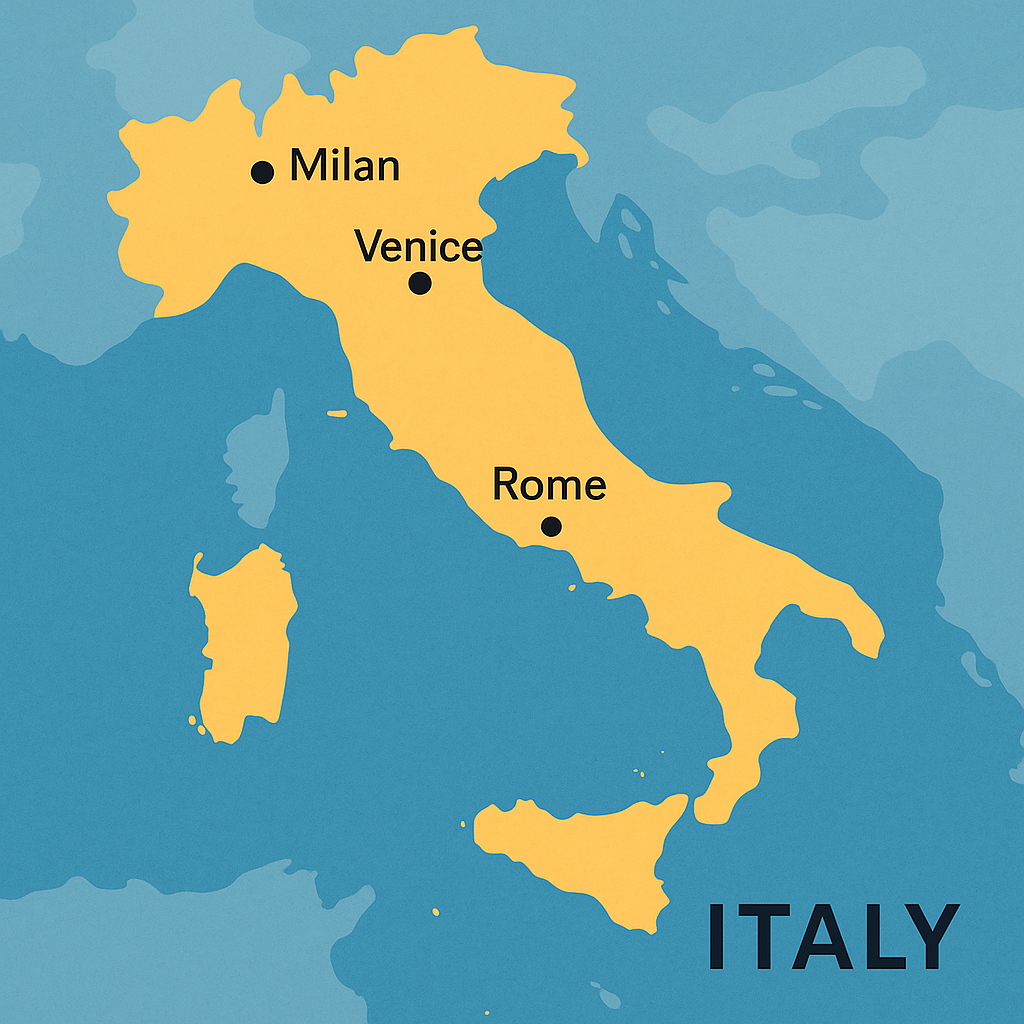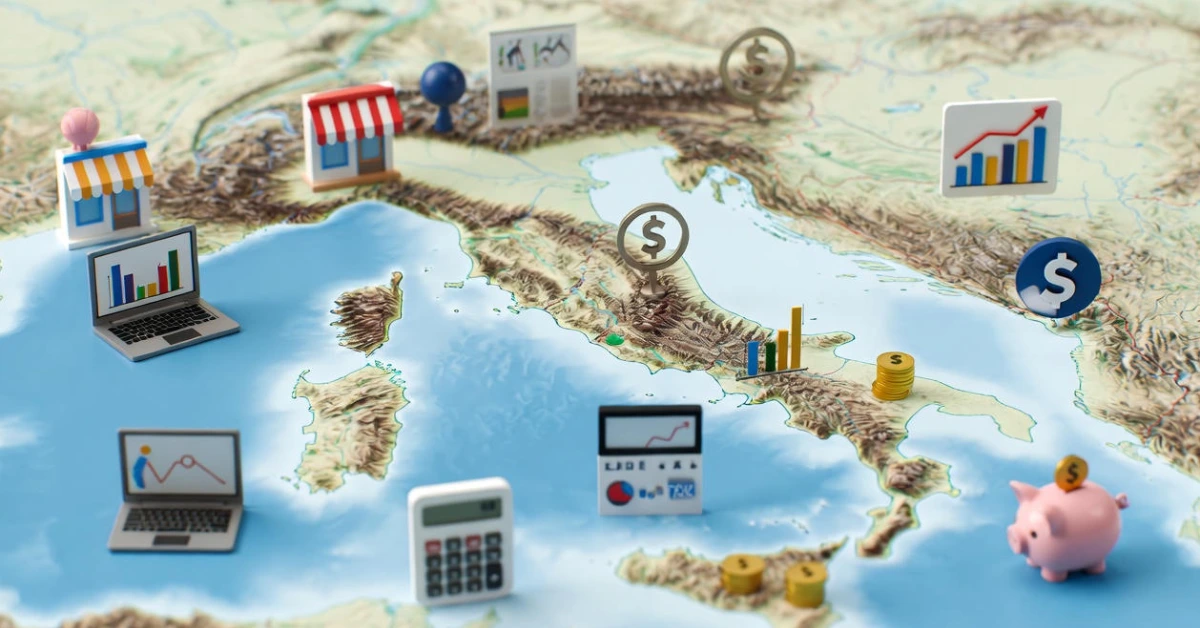For people travelling to Europe this remains the most common question. In short, yes, American Express is accepted in Italy. Yet, travelers should also note that it is not as widely accepted as Visa and Mastercard. AmEx is still a favorite card among many U.S. travelers because of its excellent rewards programs and trip protections, its actual use among Italian sellers may differ widely depending on location and business type.
In major cities such as Rome, Milan, Venice, and Florence, AmEx is used by international hotel chains, upscale restaurants, upscale department stores, and transportation operators. In non-urban areas and especially in small towns or rural areas, businesses will not accept AmEx since it carries a higher processing charge.
Table of Contents
ToggleWhy American Express Isn’t Widely Accepted in Italy
The primary reason for the lack of acceptance of AmEx in Italy is economic. Businesses are charged higher fees by American Express than by its competitors Visa and Mastercard. It is not profitable economically for small or family-owned Italian businesses with tight margins to accept AmEx.
This is particularly true for cafes, trattorias, specialty shops, and market stalls where tourists will spend a daily amount.
Visa and Mastercard are the dominant players in Italy’s card payment landscape. Globally, Visa accounts for 61.1% and Mastercard for 25.8% of card spending, while American Express handles only 11.1%. This disparity is even more pronounced in Italy.
| Location Type | AmEx Acceptance | Notes |
|---|---|---|
| Large Cities (Rome, Milan, Venice, Florence) | ✅ Widely Accepted | Hotels, luxury stores, upscale restaurants, airports |
| Rural Areas & Small Towns | ❌ Rarely Accepted | High processing fees deter small businesses |
| Hotels & Car Rentals | ✅ Usually Accepted | Major brands often accept AmEx |
| Trains & Public Transport | ⚠️ Partially Accepted | Trenitalia, Italo, and some metro systems support AmEx |
| Restaurants & Cafés | ⚠️ Limited | High-end only; small trattorias often decline it |
How AmEx Compares to Visa and Mastercard in Italy
When it comes to credit card usability in Italy, Visa and Mastercard offer the most seamless experience. These cards are accepted virtually everywhere from metro ticket kiosks to grocery stores because of their lower interchange fees and broad integration into the European payment infrastructure.
American Express cards, while advantageous for earning points and benefits, lag in universal acceptance. Many Italian businesses display stickers showing accepted cards Visa and Mastercard are almost always visible. American Express? Less often.
Still, certain services and establishments do take AmEx, including:
- Hotels (especially major brands like Marriott, Hilton, Hyatt)
- Car rental agencies (with some insurance limitations)
- Online and kiosk-based bookings with Trenitalia and Italo (Italy’s primary rail providers)
- Airports, duty-free stores, and luxury retail locations
- Major cities’ public transport systems (e.g., Rome’s ATAC allows tap-on via AmEx)
Foreign Transaction Fees: A Cost You Might Not See Coming
Foreign transaction fees are another key consideration when using American Express in Italy. While many AmEx cards designed for travelers such as the American Express Platinum or Gold Card do not charge foreign transaction fees, not all AmEx cards offer this benefit.
Most cashback or low-end cards charge a foreign transaction surcharge of up to 2.7%. During a holiday, these hidden charges can add up unnoticed while paying for meals, train fares, and accommodations in euros.
Therefore, travelers can either confirm in advance what the fee schedule of their card is or simply use a Visa or Mastercard with no foreign transaction fees as well, like the Chase Sapphire Preferred or Capital One Venture.
Car Rentals, ATMs, and Insurance Gaps
Even where accepted as a form of payment, it’s worth noting coverage exclusions especially when renting cars. Most American Express cards offer collision damage waiver (CDW) coverage for foreign car rentals, but Italy is an excluded nation.
This is effectively an imposition on AmEx travelers to purchase more insurance from the rental company, an added cost that can be avoided with a broader Visa or Mastercard travel card.
At ATMs, the utility of AmEx is limited as well. Italian ATMs (bancomat) never, or hardly ever, accept cash withdrawals via American Express cards. Travelers who require local currency should opt for a bank debit card that refunds ATM fees or has minimal exchange markups.
To avoid getting upset while traveling around Italy, it’s reasonable to have AmEx as a fall-back card. Employ it where accepted particularly for high-end purchases or pre-bookings but never forget to have a Visa or Mastercard as a base card.
How to Navigate Card Payments Like a Local
To avoid frustration while traveling in Italy, it’s smart to treat AmEx as a secondary card. Use it where accepted particularly for larger purchases or bookings made in advance but always carry a Visa or Mastercard as your primary form of payment.
In Italy, even in tourist-friendly areas, cash is still king for small purchases. Many Italians use cash for coffee, bus tickets, or small restaurant bills. Travelers should carry at least €100–200 in cash to avoid problems at businesses that neither accept cards nor advertise it clearly.
It’s also worth noting that contactless payments are widely used in cities. Tap-to-pay works well with all major card types, including AmEx so long as the seller accepts it. Always look for card network logos at entrances or registers, and never hesitate to ask: “Accettate American Express?”
| Card Network | Acceptance Rate | Foreign Transaction Fees | Best Use |
|---|---|---|---|
| Visa | ✅ Very High | Often 0% | Everyday purchases, widely supported |
| Mastercard | ✅ Very High | Often 0% | Same as Visa, reliable across Italy |
| American Express | ⚠️ Medium-Low | 0%–2.7% | Hotels, bookings, luxury shopping |
Avoiding Currency Conversion Scams
A common trap for travelers using American Express or any U.S.-issued card abroad is dynamic currency conversion (DCC). Some merchants and payment processors offer to charge your card in U.S. dollars instead of euros, often making it seem more convenient.
However, this service adds an extra fee of up to 6% by applying a marked-up exchange rate. Always choose to be charged in euros, not dollars, and check your receipt before signing.
Should You Use American Express in Italy?
Yes but with caution. American Express cards can be useful tools in Italy, particularly when booking hotels, renting cars, or shopping in larger stores. They often come with excellent fraud protection, rewards points, and travel perks. However, their limited merchant acceptance, possible foreign transaction fees, and insurance gaps make them unreliable as a sole payment method.
| Limitation | Description | Advice |
|---|---|---|
| Merchant Acceptance | Low in rural and small local businesses | Always carry a Visa/Mastercard backup |
| Foreign Transaction Fees | Up to 2.7% on some AmEx cards | Use travel cards with no foreign fees |
| ATM Withdrawals | Not supported at most Italian ATMs | Use debit cards with ATM fee refunds |
| Car Rental Insurance | Italy excluded from AmEx CDW | Buy insurance or use Visa/Mastercard coverage |
| Currency Conversion (DCC) | Extra 3–6% if charged in USD | Always select payment in EUR |
To travel smart in Italy:
- Bring at least two credit cards preferably one AmEx and one Visa or Mastercard
- Make sure at least one card charges no foreign transaction fees
- Carry some cash for small purchases
- Use AmEx where accepted, but be ready to switch when needed
We recommend balancing card types and payment methods so that you can enjoy your time in Italy without worrying whether your card will be accepted when it’s time to pay for that perfect plate of carbonara.
Need Personalized Advice for Managing Your Finances in Italy?
Whether you’re relocating, investing, or simply planning a short trip, using the right payment methods and understanding Italy’s financial systems can save you time, money, and stress. At Accounting Bolla, we help travelers, expats, and international entrepreneurs navigate Italy’s complex financial landscape with confidence.
Are you interested in similar subjects? Then take a look at our related articles here, Living (and Paying Taxes) in Italy with a Green Card, Education cost in Italy: a comparison with the American ones and The Best Italian Companies to Work For: Opportunities for Americans.




